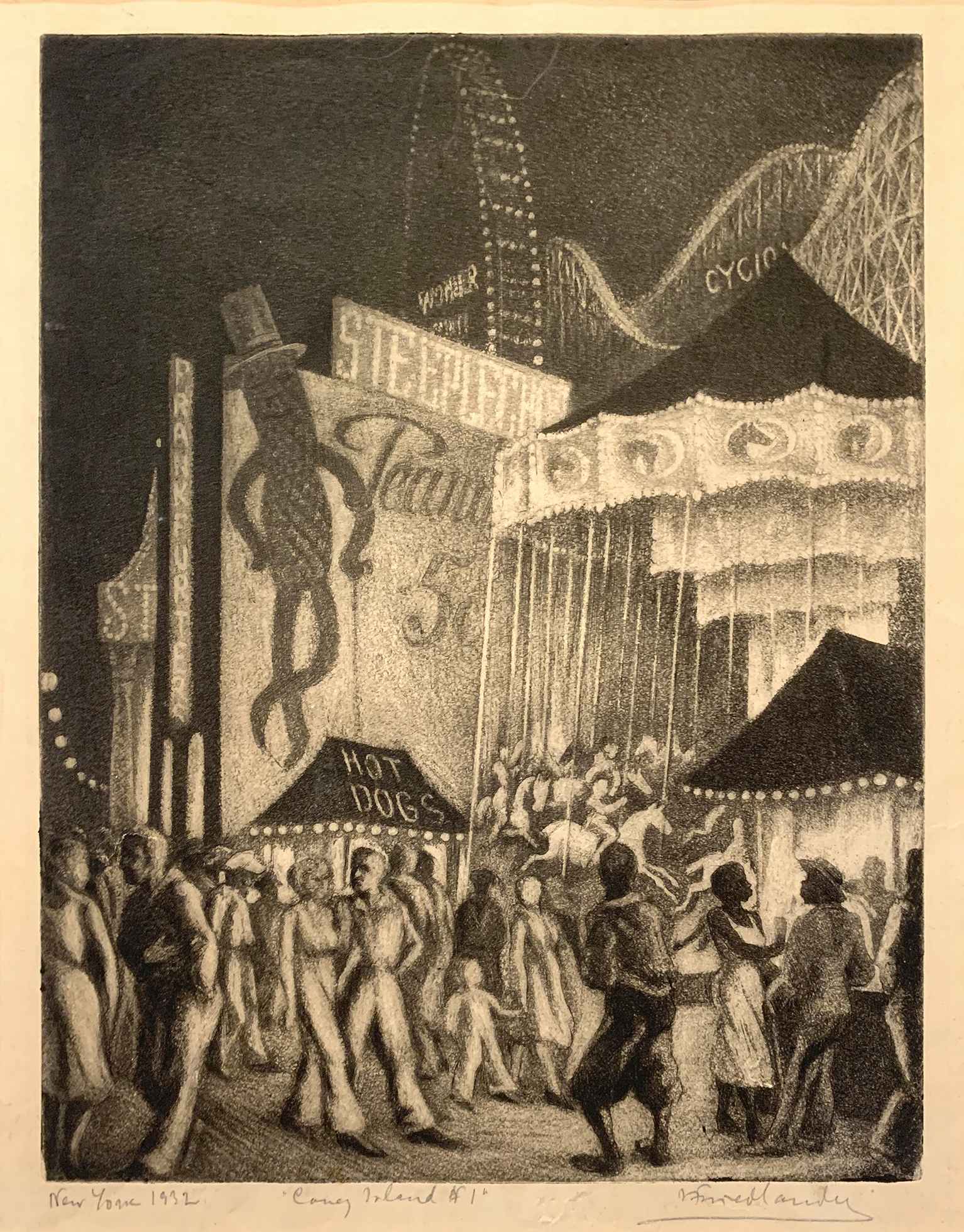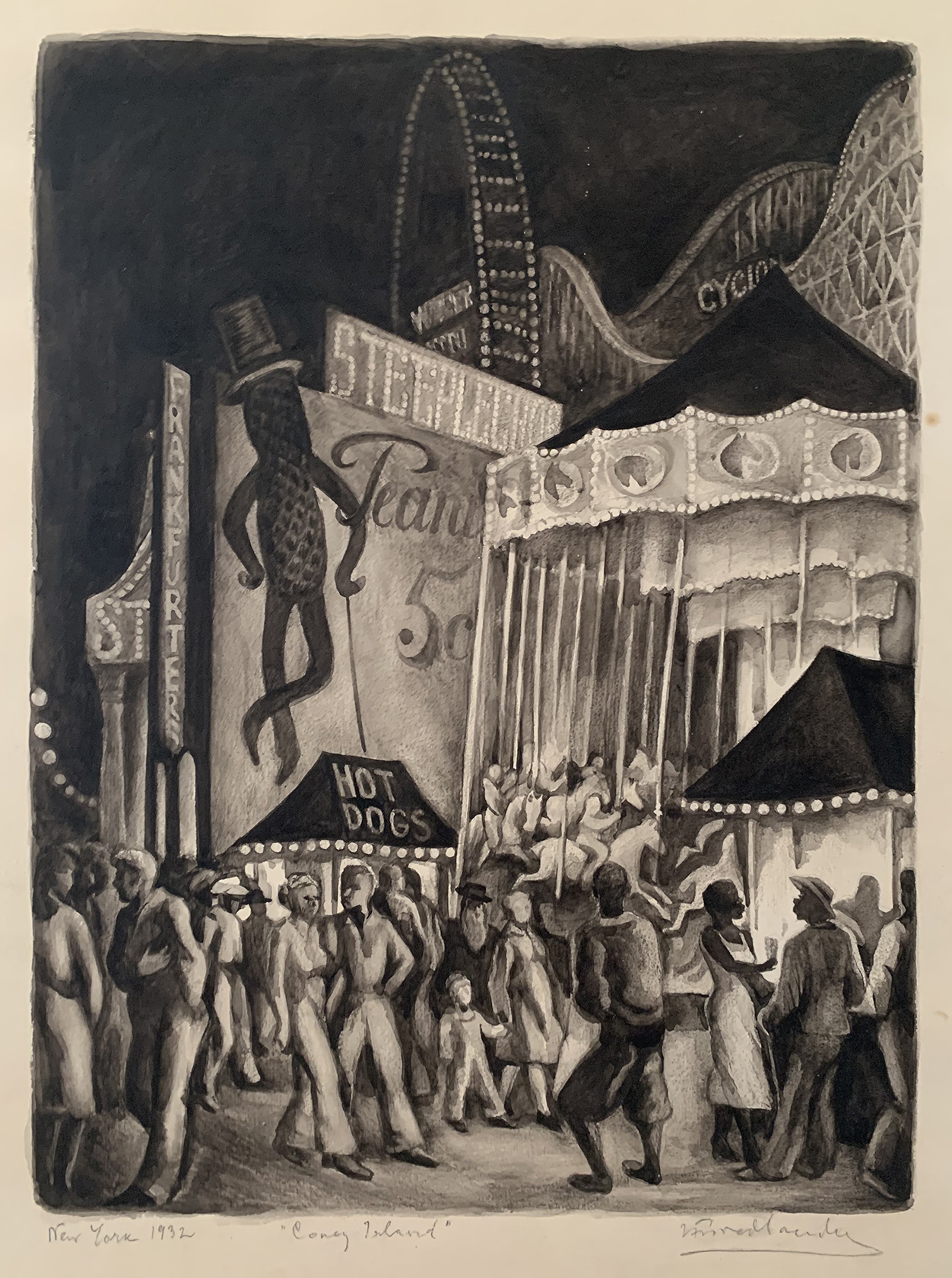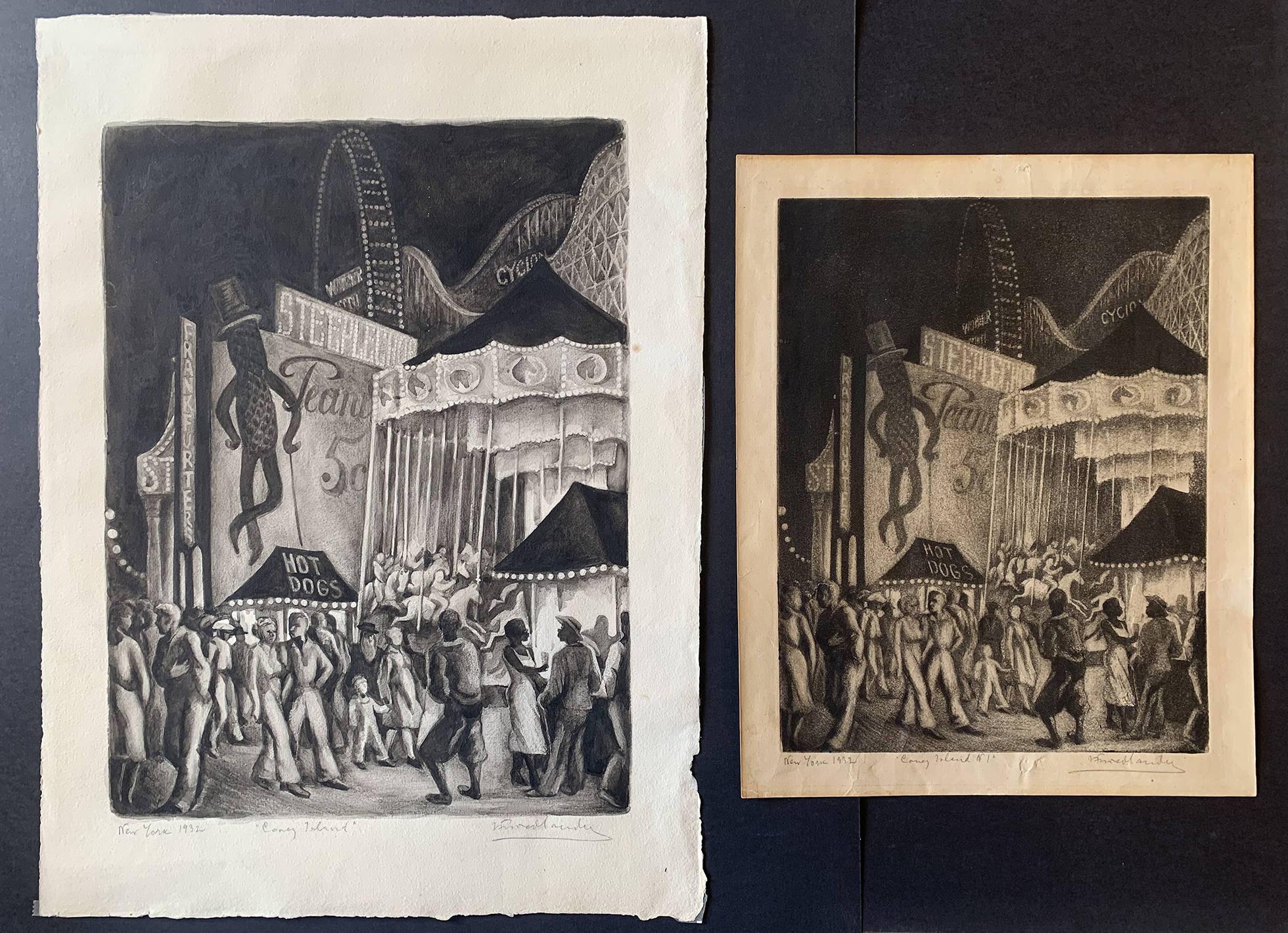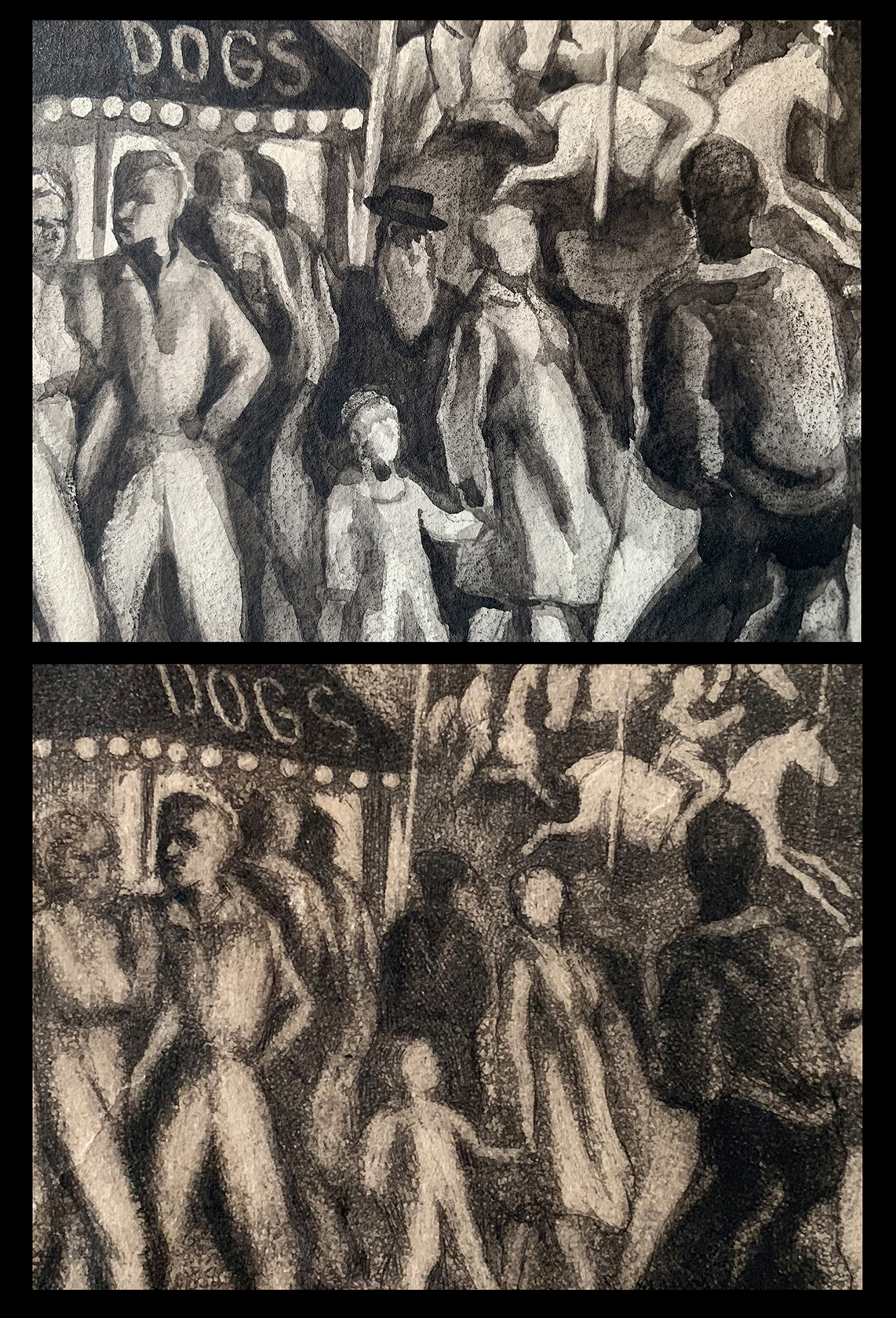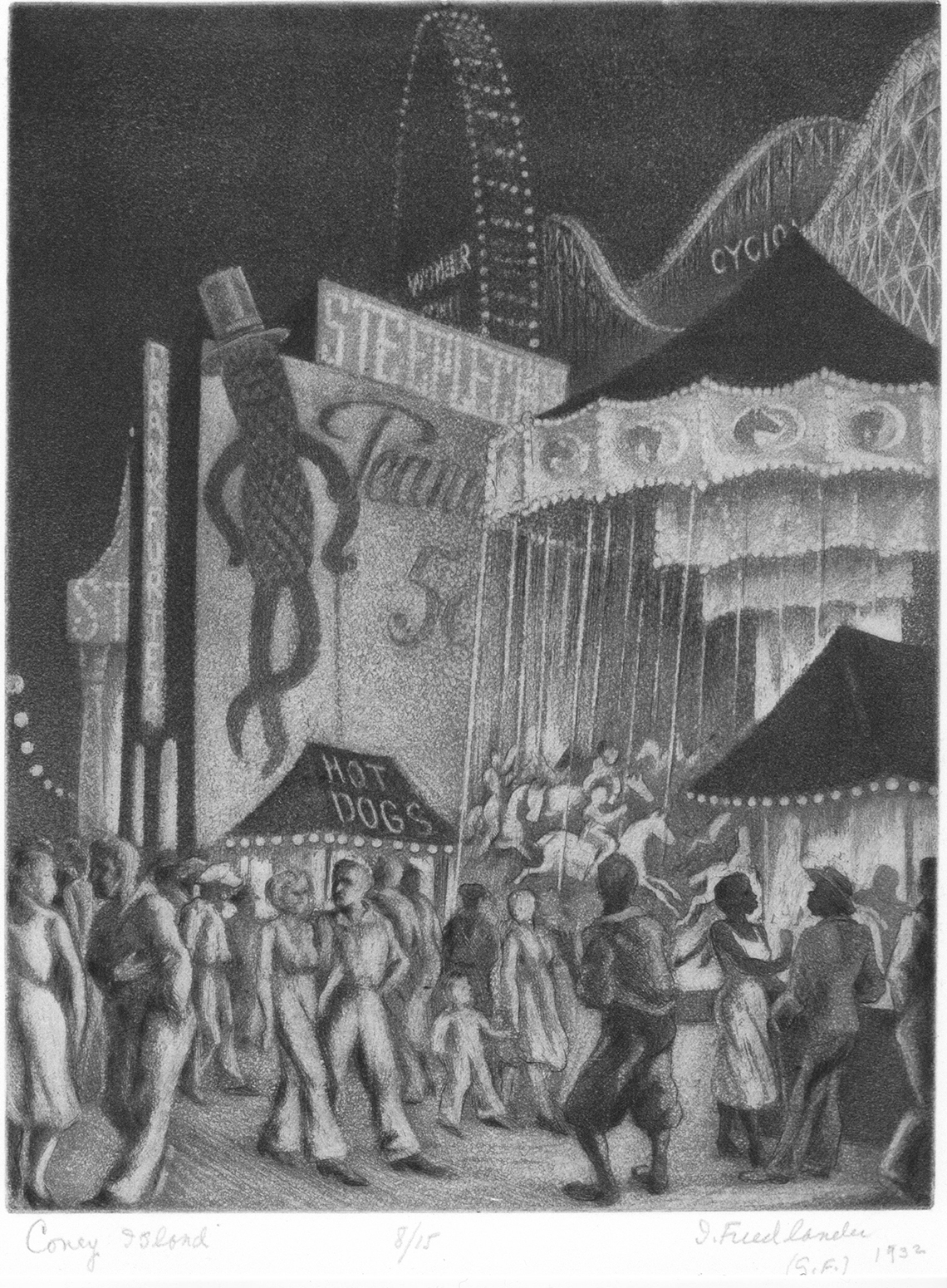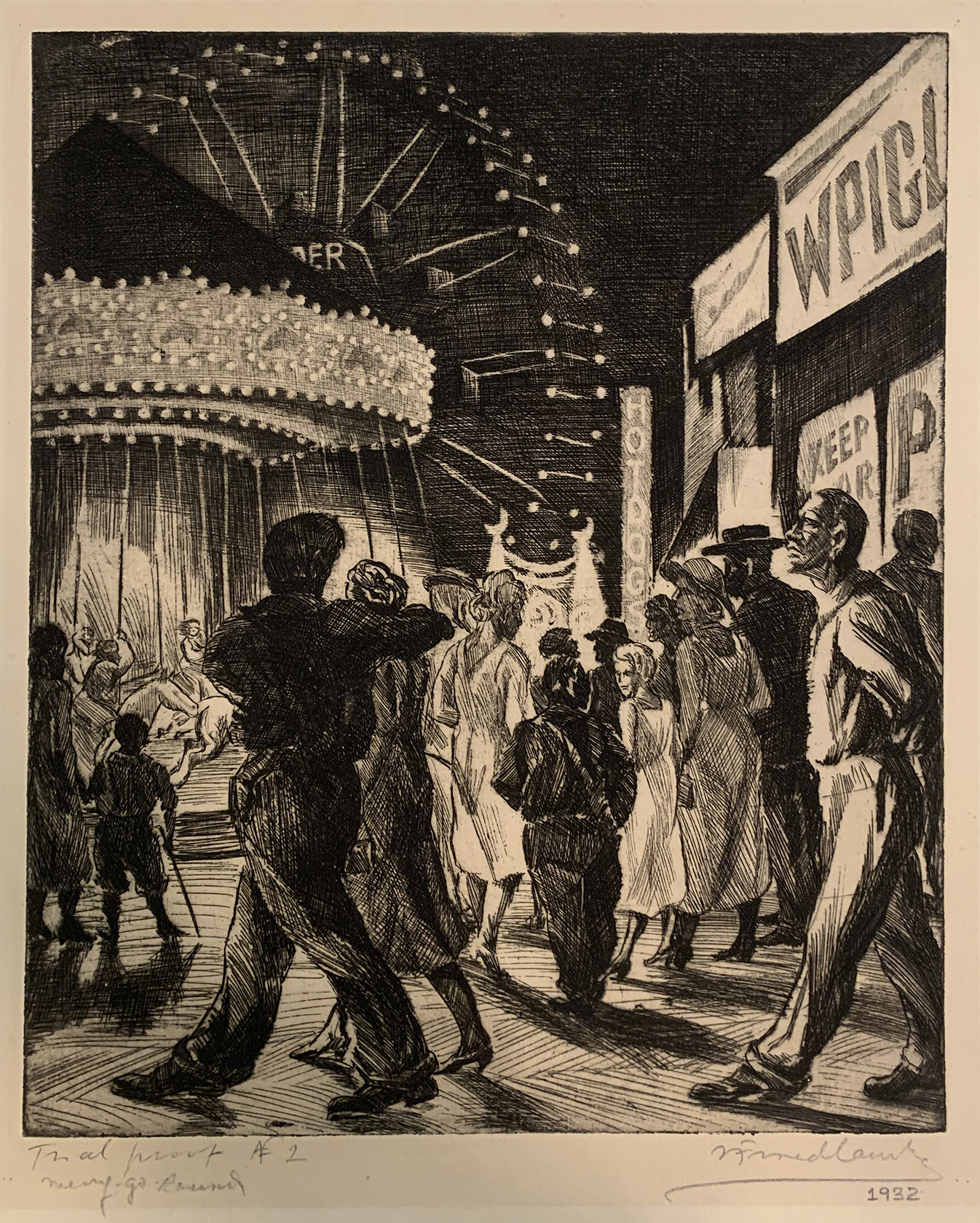Isac Friedlander: Coney Island
Introduction
If only Jane Haslem (1934-2020) had produced a catalogue raisonné on the prints of Isac Friedlander (1890-1968), I’d have a lot more biographical info on the artist to share. She did tell me she intended to do so, but the long-time D.C. gallery owner never completed her project. The Friedlander estate has given a great deal of material to Georgetown University, but not much is online except a brief bio. (LINK)
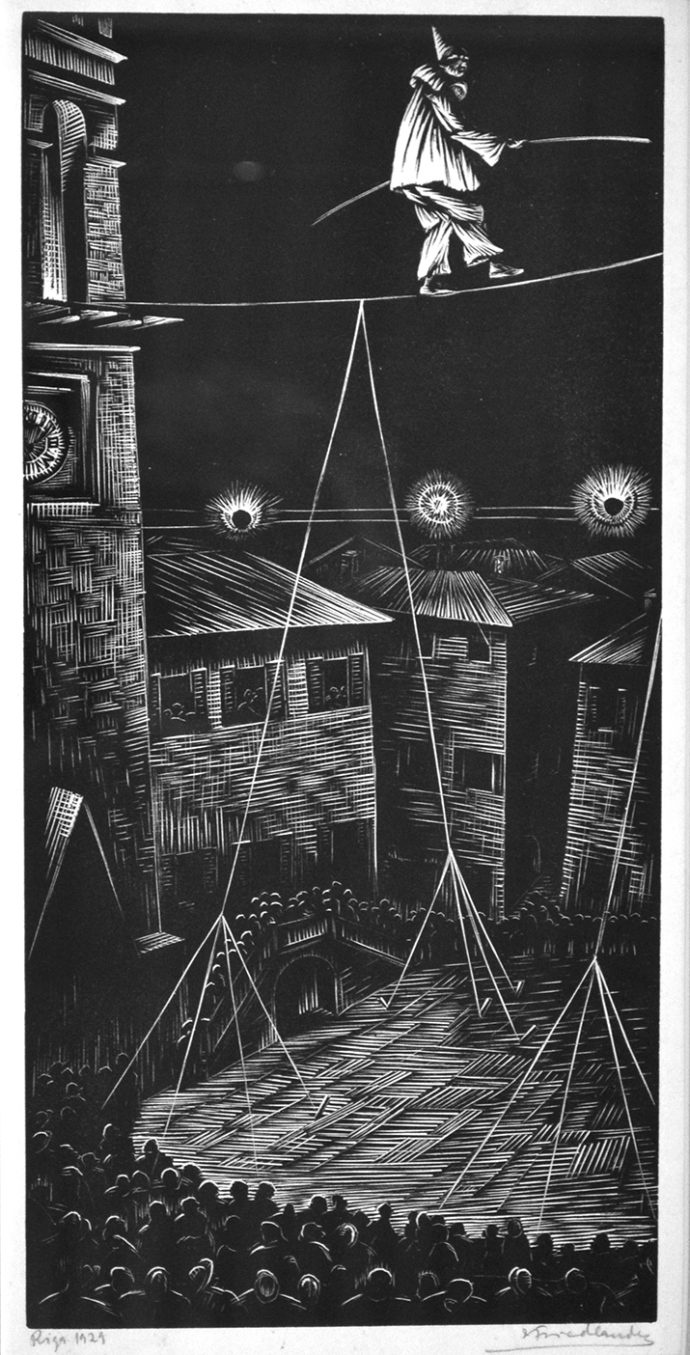
Isac Friedland, “Riga,” woodcut, 1929, 12″ x 5 3/4″. This print was purchased in 1997 from William Greenbaum Fine Prints. (The 1929 date of his print “Riga” suggests that it may have been created after Friedlander arrived in the United States.)
Yet the acquisition last year of a gouache drawing that Friedlander made in 1932 in preparation for his aquatint “Coney Island” is worth blogging (boasting) about without the usual context about the artist’s intensions that I prefer to provide. One thing I can attest to is his interest in public amusement situations.
Here is woodcut “Riga” of a high-wire act performed at night in a public square in the capital of Latvia, which was part of the Russian Empire at the time. From the Georgetown U. website, here’s a window into this Jewish artist’s early life. The text is dated 1984.
“Isac Friedlander was born in 1890 in Mitau, Latvia, then as now a part of Russia. Those were difficult days for a captive people under the czarist yoke, but it was not long before young Isac’s assertive spirit emerged. At sixteen he was arrested and condemned to death, along with several of his classmates, for protesting compulsory uniforms and weekend curfews. His classmates were shot but his sentence was commuted to life imprisonment.
“Fortunately, Friedlander’s skills in drawing and the portraits he did of his prison guards and their children came to the attention of a local functionary, who took an interest in him. In four years he was released.
“Friedlander’s mother, fearing another confrontation between her son and the authorities, sold her jewelry and sent him to Italy. There, at the Academy of Rome, he studied painting and printmaking—the only formal art training he would ever have.
“After the overthrow of the czarist regime, Friedlander, with money given him by Maxim Gorky whom he had befriended, returned to the short-lived freedom of his native Latvia, where he taught art through the 1920’s. Then, in 1929, with the encouragement of his cousin Joseph Hirshhorn, he began his long and frustrating odyssey as an immigrant bound for America.”
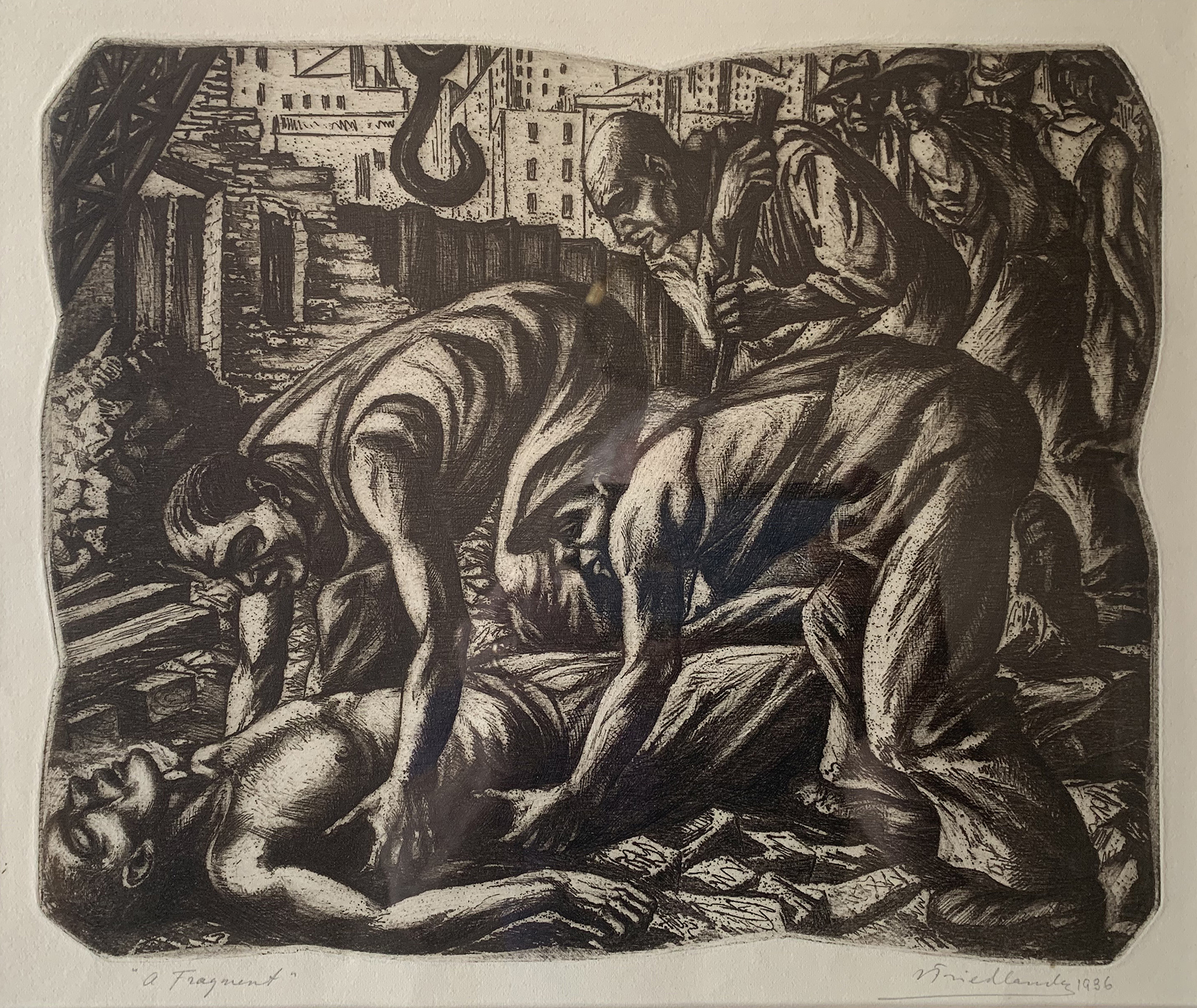
Isac Friedlander, “Fragment”, etching, 1936, 10″ x 11 3/4″. This was purchased from Jane Haslem in 1995.
This print of a workplace accident is in tune with the next few paragraphs of the Georgetown biography:
“When at last he arrived in the United States, Friedlander found, in place of a land of challenge and opportunity, a nation locked in the grip of the Great Depression. Human suffering, unemployment, and despair were everywhere he looked. For him, however, deprivation and man’s struggle to cope with it had been the only way of life he knew.
“Indeed, his art was firmly rooted in the imagery of human suffering and of man’s struggle with adversity: first in those youthful drawings in a czarist prison, then in the art of his homesick student days in Rome, and more recently in his work while teaching in Latvia. It was only natural, therefore, that his art during those depression years should focus on the lives and sufferings of the downtrodden he found wandering the streets of New York.”

Isac Friedlander, “Diversion,” etching, 1939, trial proof #4, 9 7/8″ x 13 7/8″. This was purchased in 1981 from Betty Duffy at her Bethesda Art Gallery.
Despite the hard times that Friedlander often made the subject of his printmaking in New York, he also recorded small moments of real joy such as the tavern scene in “Diversion.” Not only can you almost hear the jukebox glowing in the back of the room, but you can appreciate that this tavern welcomed an integrated clientele.
CONEY ISLAND
The one public place of amusement that Friedlander was particularly fond of was Coney Island, the Atlantic-side of the Borough of Brooklyn that entertained New Yorkers with amusement parks since the late 19th century. He made three prints–a straight etching, an etching-aquatint and a woodcut–that celebrate Coney Island at night with its kaleidoscope of lights, revolving rides and parade of passersby.
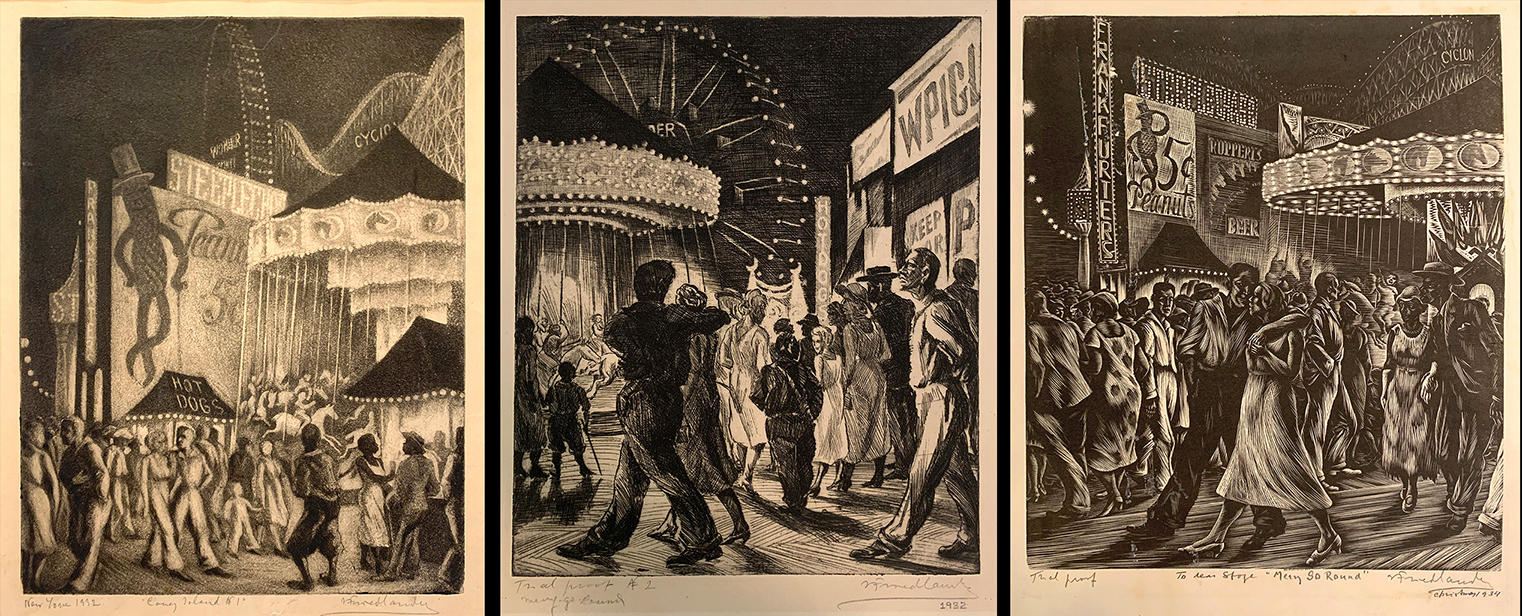
The images of the center and right prints are from the Paramour Fine Arts website (LINK)
From left to right: “Coney Island” etching/aquatint, 1932; “Merry-Go-Round,” etching, 1932; and “Merry Go Round,” woodcut, 1934.
I purchased “Coney Island” in November 2022 from Pasarel, an Israeli auction house. What attracted me to it was the fact that I already owned (as of February 2022) the gouache drawing Friedlander made beforehand. Oddly enough it also had come from Israel: Gallery Aviv, which offered the work through the Bidspirit auction website.
Despite the fact that the drawing is a unique artwork, owning it was an opportunity to get closer to the artist’s hand in the form of his brush work. By working monochromatically, he was able to develop the full range of contrast–from black to white–that he would need to refer to when he transferred the scene onto a metal intaglio plate. I’ve looked online to see if there were photos to show whether Friedlander’s view was actual or a conflated view of Coney’s famous rides: Steeplechase, Cyclone and merry-go-round. But I couldn’t find any. I failed even to find a photo of Mr. Peanut at Coney Island.
By having both, I learned that Friedlander’s preparatory work, at least in this case, was larger that the resultant print. And in translating the image from one medium to another, he was extremely faithful to his drawing, even to the point of matching the number of lightbulbs in most cases.
The one exception that I could find involved the image of an orthodox Jewish man. In the middle of the detail from the drawing (top) a male figure with hat and beard was clearly painted. But in the print (below) his countenance is just a shadow. Why Friedlander, who would go on to create images of the horrors of the Holocaust, would remove the obvious Jew from his print is not known. Maybe the archives at Georgetown would hold the answer.
I should also note that the copy of “Coney Island” in my collection is not in the best of shape. Its condition issue is particularly obvious in the photo of it with the drawing pictured beside it. Note the puncture to the left of the signature. There’s another small tear within the image. But my copy has one attribute not commonly found on copies of “Coney Island”: the artist’s signature. Above is an image sent to me by the Smithsonian Museum of American Art. Its copy was signed and initialed by his widow, Gilda Friedlander. Another copy on Artnet also has an estate signature (LINK). Oddly that one is marked as an edition of 50, while the Smithsonian copy reads an edition of 15.
This trial proof of the etching “Merry-Go-Round” was also printed in 1932. The most obvious difference between this and the aquatint, beside the loss of Mr. Peanut, is the scale of the people. Instead of less than a third of the height of the image in the aquatint, people in the etching are about half of the height.
Two years later in a woodcut, also named “Merry Go Round,” the people are as prominent as in the etching–in fact more faces are delineated including the black couple on the right–and Mr. Peanut has returned, but much smaller than in the aquatint. Maybe in two year’s time the signage had changed. On the other hand the vertical word “Frankfurters” is much larger in this print.
I wish my parents, who were both born and raised in Brooklyn, were alive today. I’d ask them: “What was the real size of Mr. Peanut?”
***
Trackback URL: https://www.scottponemone.com/isac-friedlander-coney-island/trackback/

